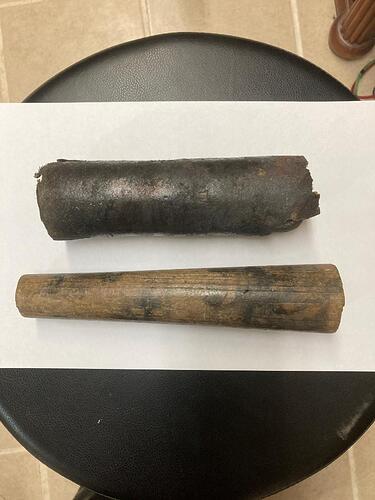Emily,
I really like your Polishing Mandrel, great idea!
Like Rob, I have had some bad experiences with polishing Chains on a Buffing Machine, small, light-weight Chains being the worse, as they act like a weed-whacker and slice the skin off your fingers! Then of course there’s the Clasps, that’s what can really get you, almost like the Barbs on a “Cat-O-Nine-Tails”! Thankfully, I only ever got cuts, a few chucks of skin sliced/torn off, very numbed fingers and whip burns…
Interestingly enough, large, heavy Chains are pretty easy to polish on a Buffing Machine and I still do them like that to this day, though they can get quite hot, so you do have to take a break from polishing from time to time.
Now, I typically only polish light-weight Chains with my Flax-Shaft and only a few inches at a time - I lay the Chain out flat on my wooden Bench Pin and start polishing, then I move it back a little and keep going until I’m finished, this way I have compleat control over the Chain. I used to use an old Ring Clamp to polish them (similar idea to yours), but one time the Chain slipped a little and got caught up in the Brush in the Flex-Shaft and tore my fingers and face up (I had several cuts to my nose and cheeks), so that ended that! That kind of pain is a very good motivator to change your Technique! 
I have tried using Gloves and the Finger Cots while polishing, but I don’t believe that I have the same control over or “feel” for what I’m polishing, so it’s still just bare fingers for me…
Rob & Jeff, that “Dead Man Switch”/ Motor Break sounds like something that should be on All Buffing Machines, as lots can go wrong very quickly on a Buffing Machine! Have any of you ever “slammed” a larger piece/object in a Buffer? I have and besides that horrifying sound, having your hands pulled under the wheel is not a pleasant experience! We Jewellers certainly can have some exciting (and painful) experiences at times!
Jonathan
